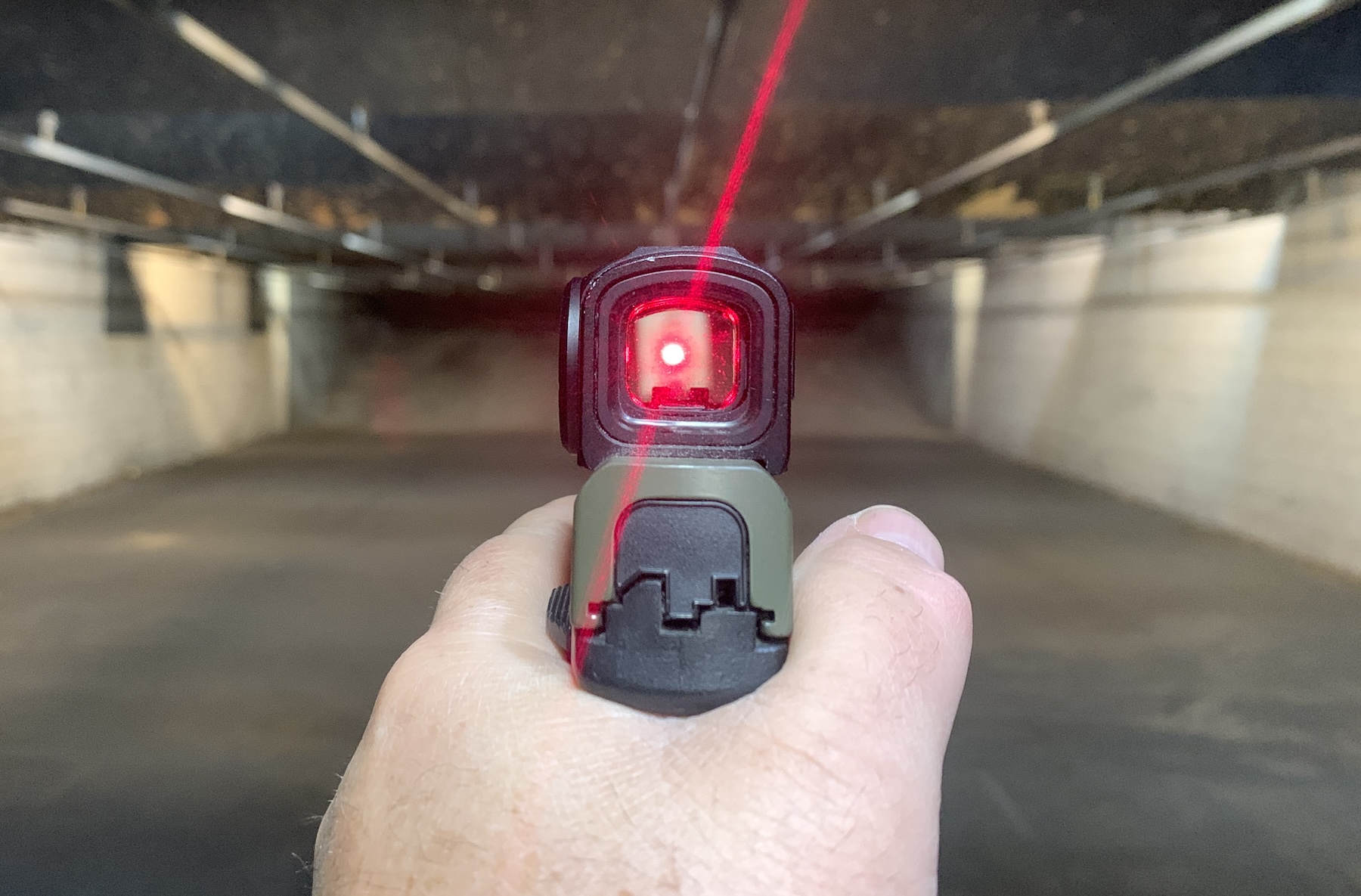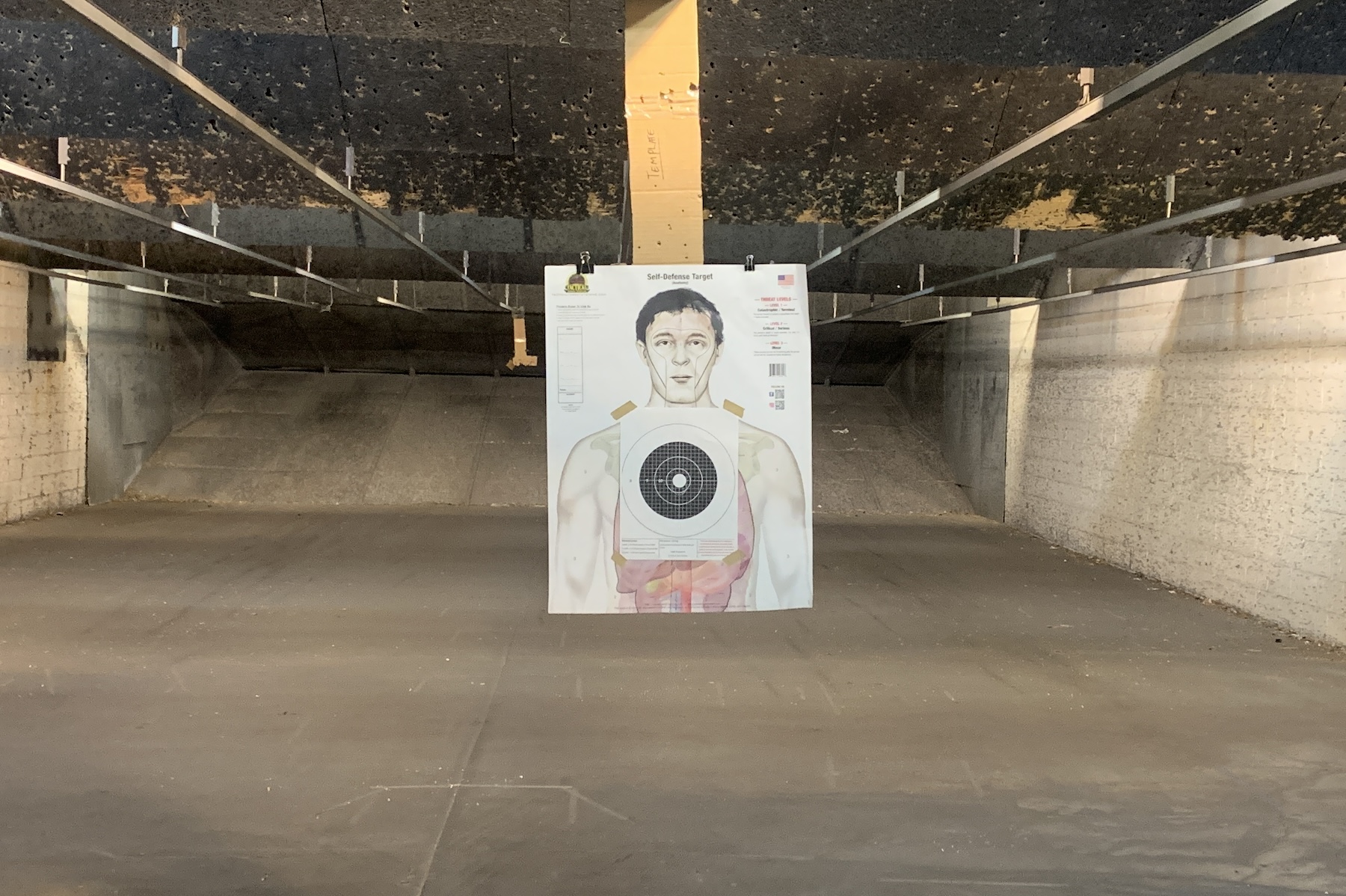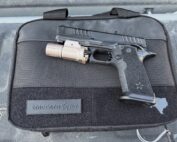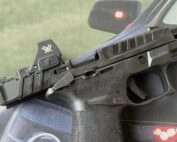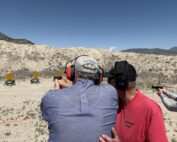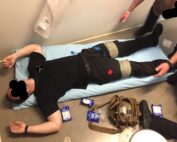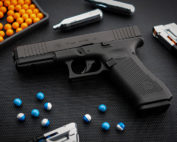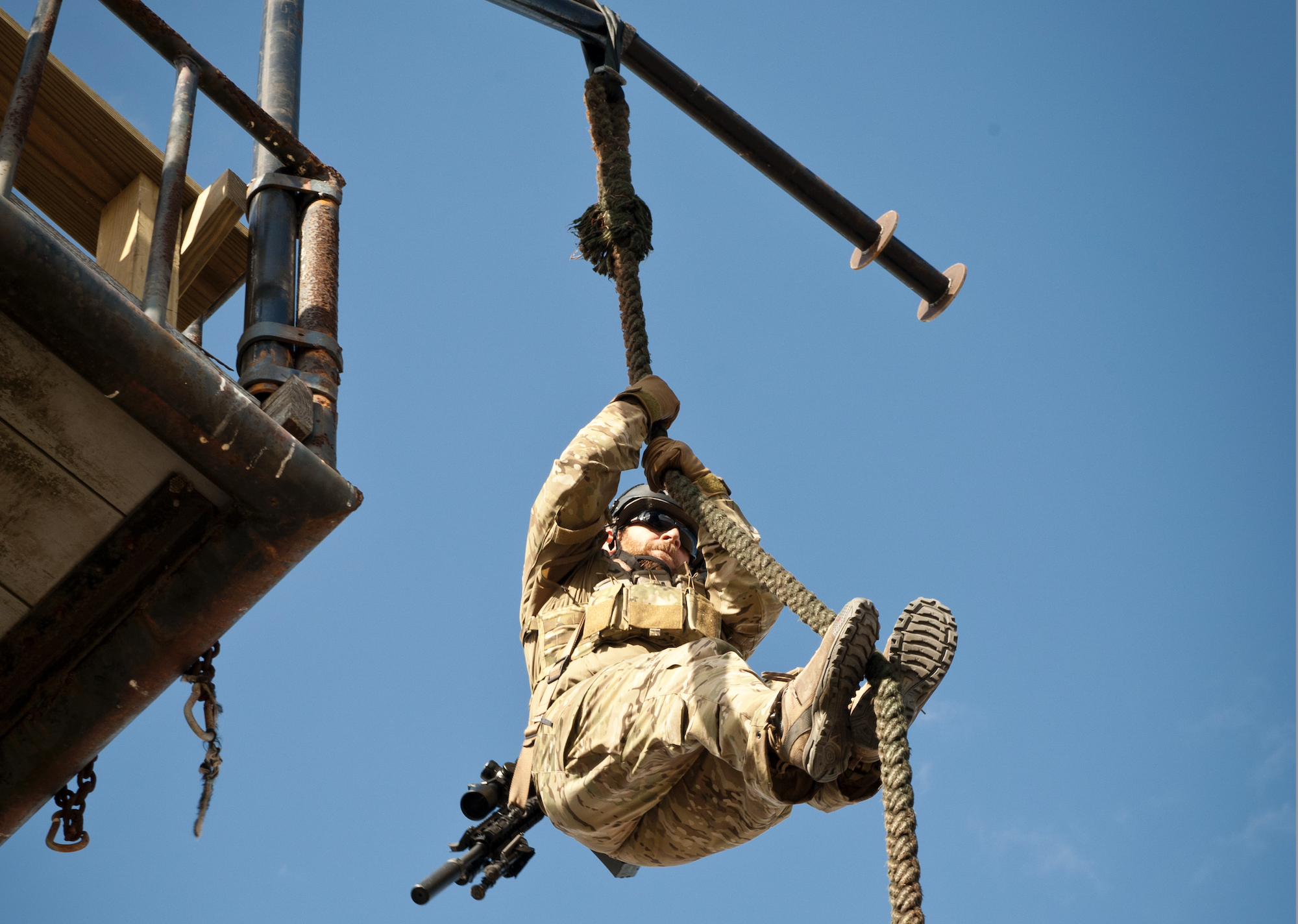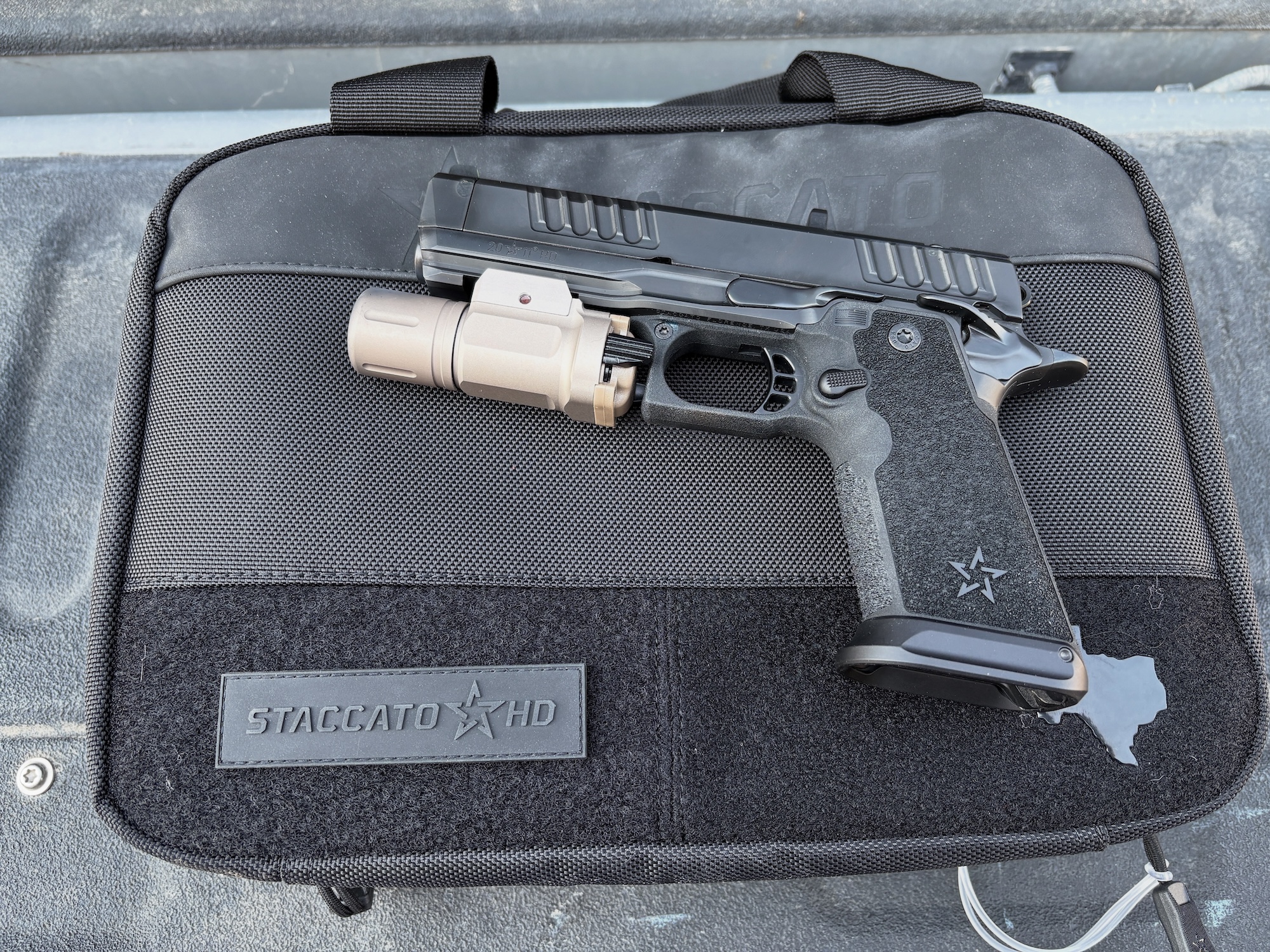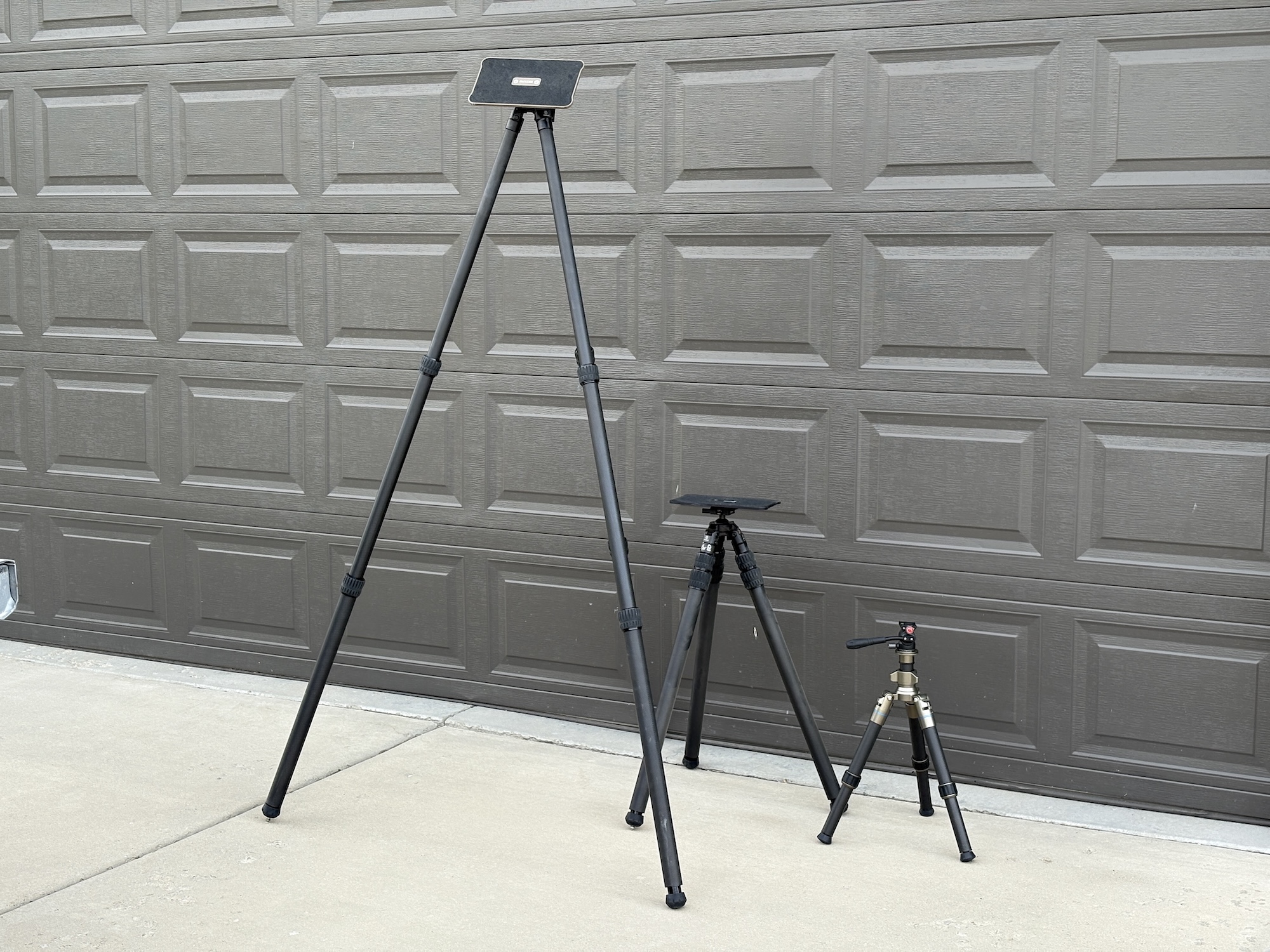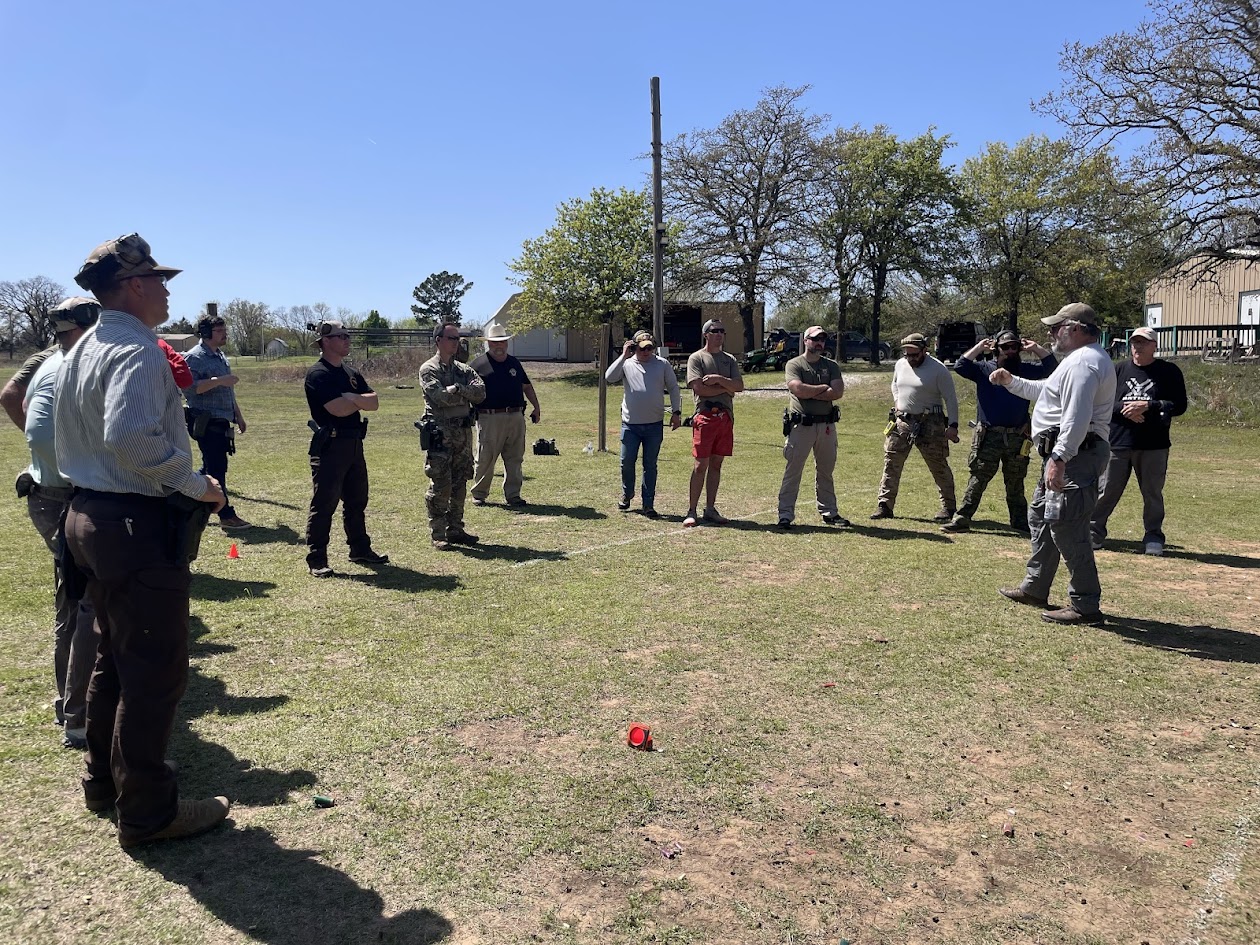
feature2023-11-13 at 8.27.47 AM copy
Where do I set the dot? Is it like lights? Can it be too bright? Can you, or should you, tailor the dot’s setting to the current lighting conditions? What about the situation?
Phone call
This past weekend, I talked with another instructor who asked if I had seen the body-worn camera footage of a daytime foot pursuit shooting.
“No, no I haven’t.”
“Well, look at what the officer does with his dot.”
One of the biggest benefits of body-worn camera video has been the insight into what happens during events, specifically officer-involved shootings. From an instructor’s point of view, aside from the tactics employed, the malfunctions that can happen are worth paying attention to.
A reminder: you are not focusing on the dot or the reticle when shooting a pistol-mounted optic. Instead, you are focused on the threat, the target, and then letting the reticle come into your line of sight on top of what you want to hit.
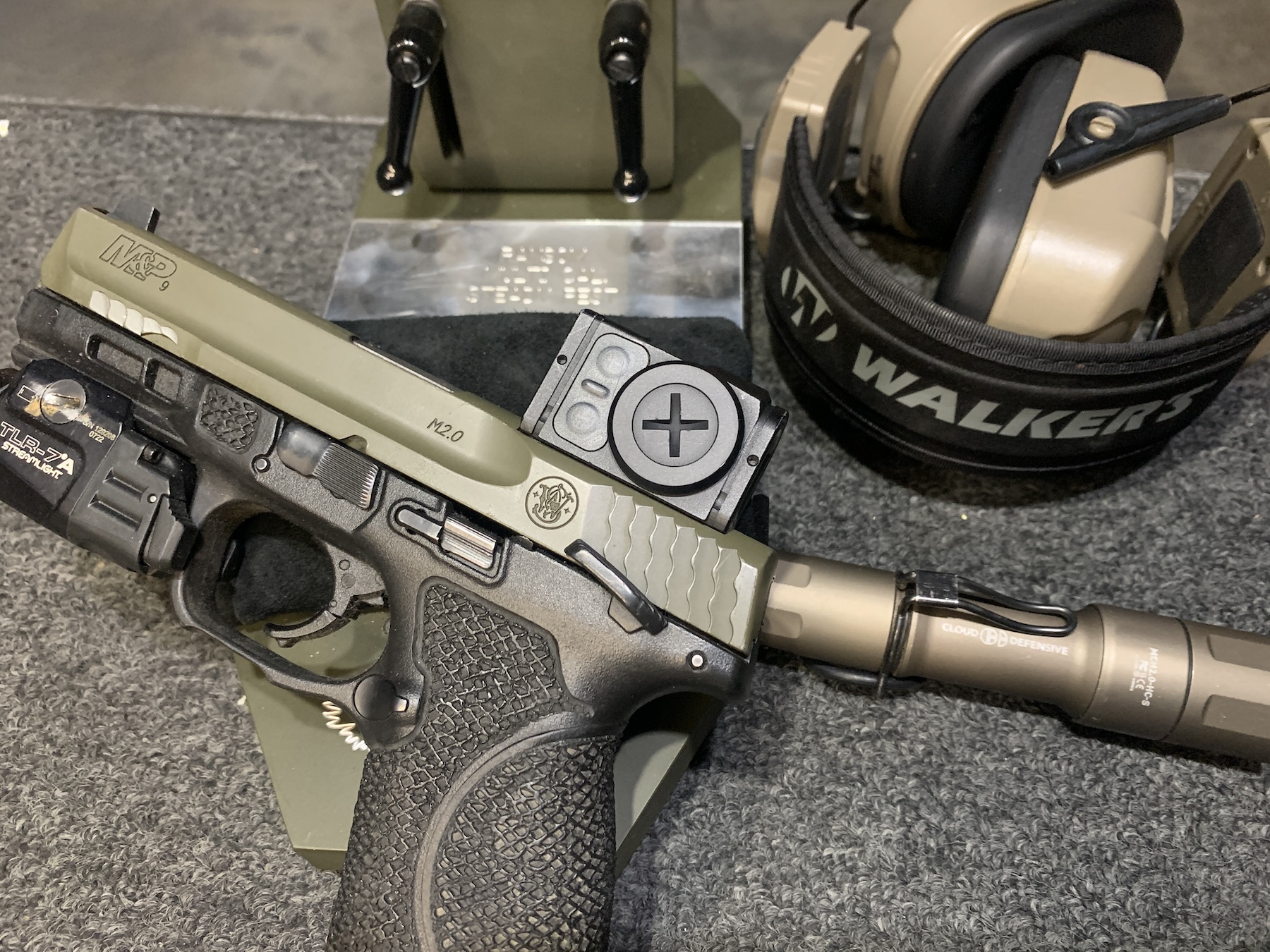
Aimpoint’s + and – buttons only adjust the brightness. To zero, I need the Ransom Rest, Walker’s ear pro, and a handheld light from Cloud Defensive to check the brightness when I’m done.
Zero
When zeroing the optic, I set it differently than when carrying it. And this is not something I came up with; this carries over from our experiences with red dot optics on carbines and rifles.
Turn the dot down as low as you can while still being able to see it on the zero target you are using. You might have to consider ambient lighting conditions during this process.
Why do I recommend dimming it? Perceived dot “size” – the dimmer the dot is, the “smaller” the dot will appear to you.
Carry
For my carry and teaching guns, I want to see the dot regardless of the ambient light conditions (sunlight or artificial). Also, I don’t want to worry about what could happen when I turn on my hand-held light or the light on that firearm.
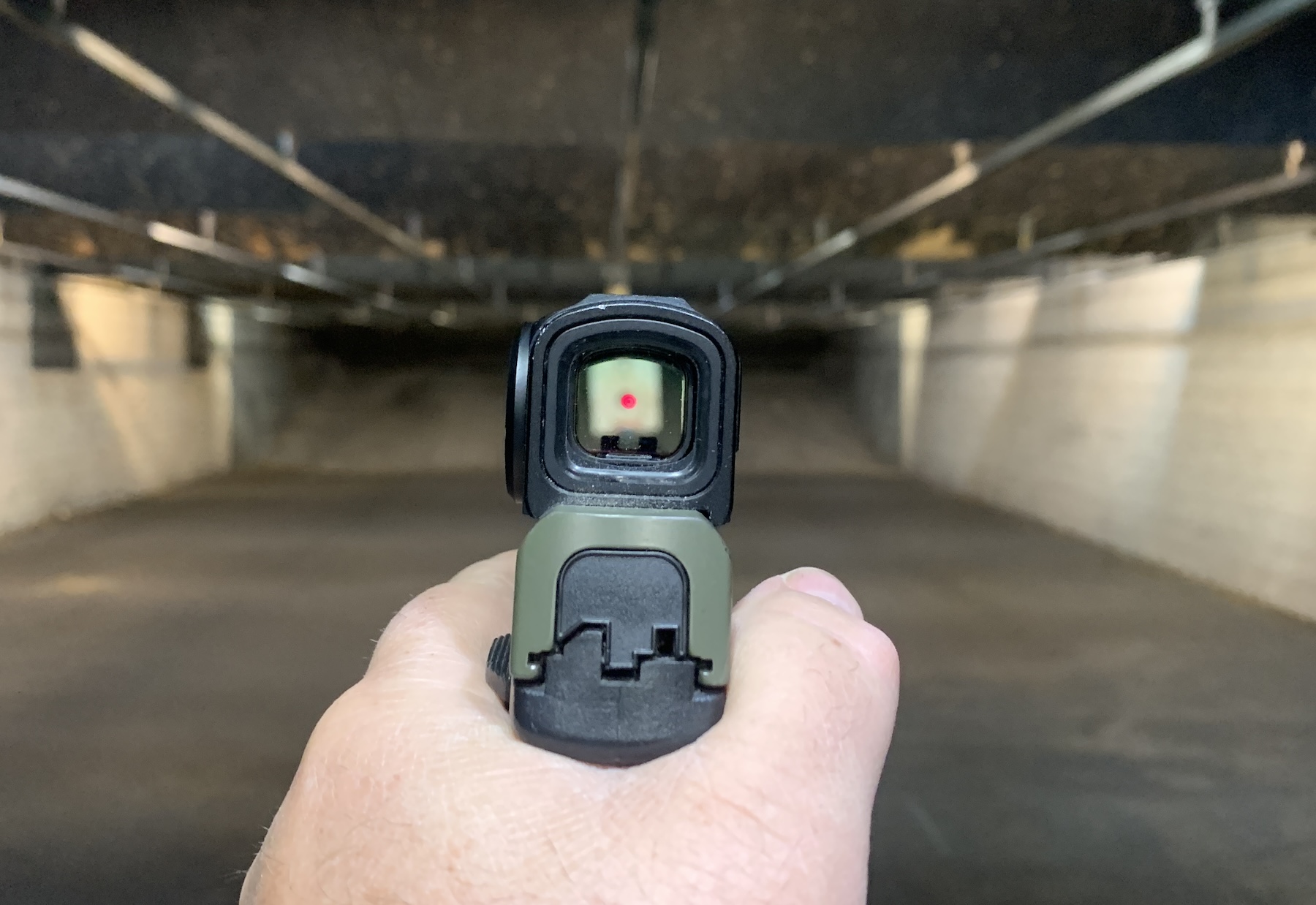
After powering the dot down to where I could just see it, I couldn’t photograph it. The dot was powered up just enough for the picture. See the target?
Process
So, how do I do this? Go into your largest, width or length, light-colored room when it is dim to dark. Then, turn on your daily carry hand-held or your pistol light and shine it on the far wall. Then, take a sight picture with your optic in the center of the beam. Then, adjust your dot until it is visible over the hot spot. With a good-quality optic, you should not have to be at full power. Instead, you will probably be a few clicks below that.
Verify
Regardless of who is giving you advice or suggestions, consider following the Russian proverb that President Reagan made famous – “Trust but verify.” As circumstances allow, confirm your ability to see the reticle, with and without your hand-held and weapon-mounted lights, under various lighting conditions.
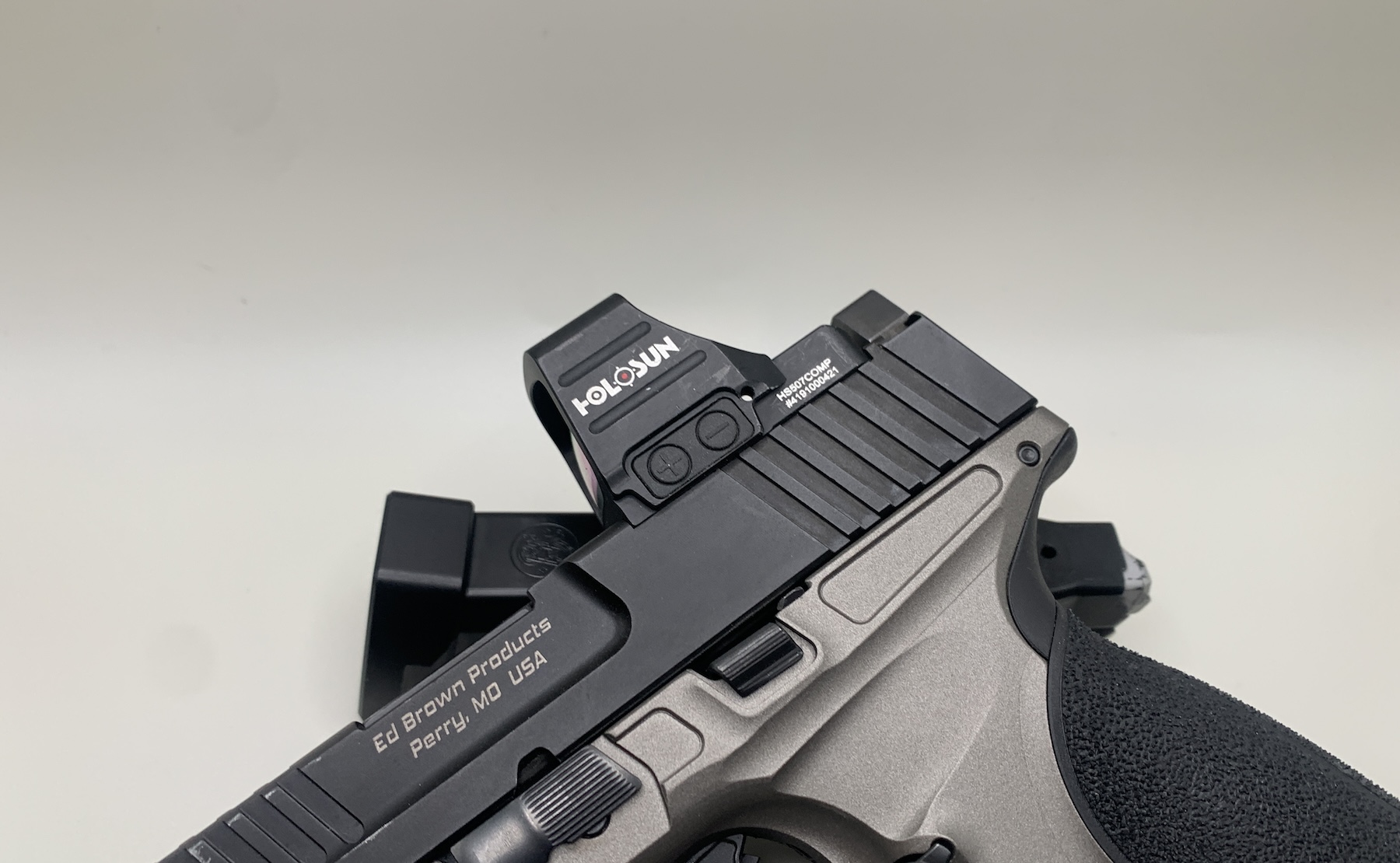
The buttons on this Holosun 507Comp, like their other optics, not only adjust the reticle’s brightness, but they also change the specific reticles from dots to circles and they lock in your choice. Look for more on that Ed Brown pistol in the near future.
Lock Outs
Some optics have a lock-out feature built into their buttons and switching. Check the user’s manual that came with the optic for whether it has one or not. And, how it works.
However, not every design does. While I am not an engineer, a lock-in or lock-out capability should be built into the switching for any new optics.
Match issues
I have encountered issues with my manipulations inadvertently dimming the reticle. Earlier this year, in a regional IDPA match, while running the slide – with an overhand grip – during the Make Ready phase. I had hit the minus button hard enough or long enough that my reticle was nowhere to be found after the beep. Whoops. Thankfully, I had my irons.

In this screen capture from the Anaheim PD critical incident video, the officer appears to be adjusting the dot during a confrontation with an armed assault suspect.
Problems
Going back to the video that prompted this article. You’re involved in an encounter that could quickly end in a lethal force confrontation. If you are looking at the reticle and adjusting it, how much of the event are you seeing? What visual information about the other person’s behavior do you have in that instant?
Mental attention
We don’t multi-task; instead, we task shift. How much bandwidth, or processing power, am I devoting to evaluating the other person’s actions and behaviors while focusing on getting the reticle to a specific brightness for that event?
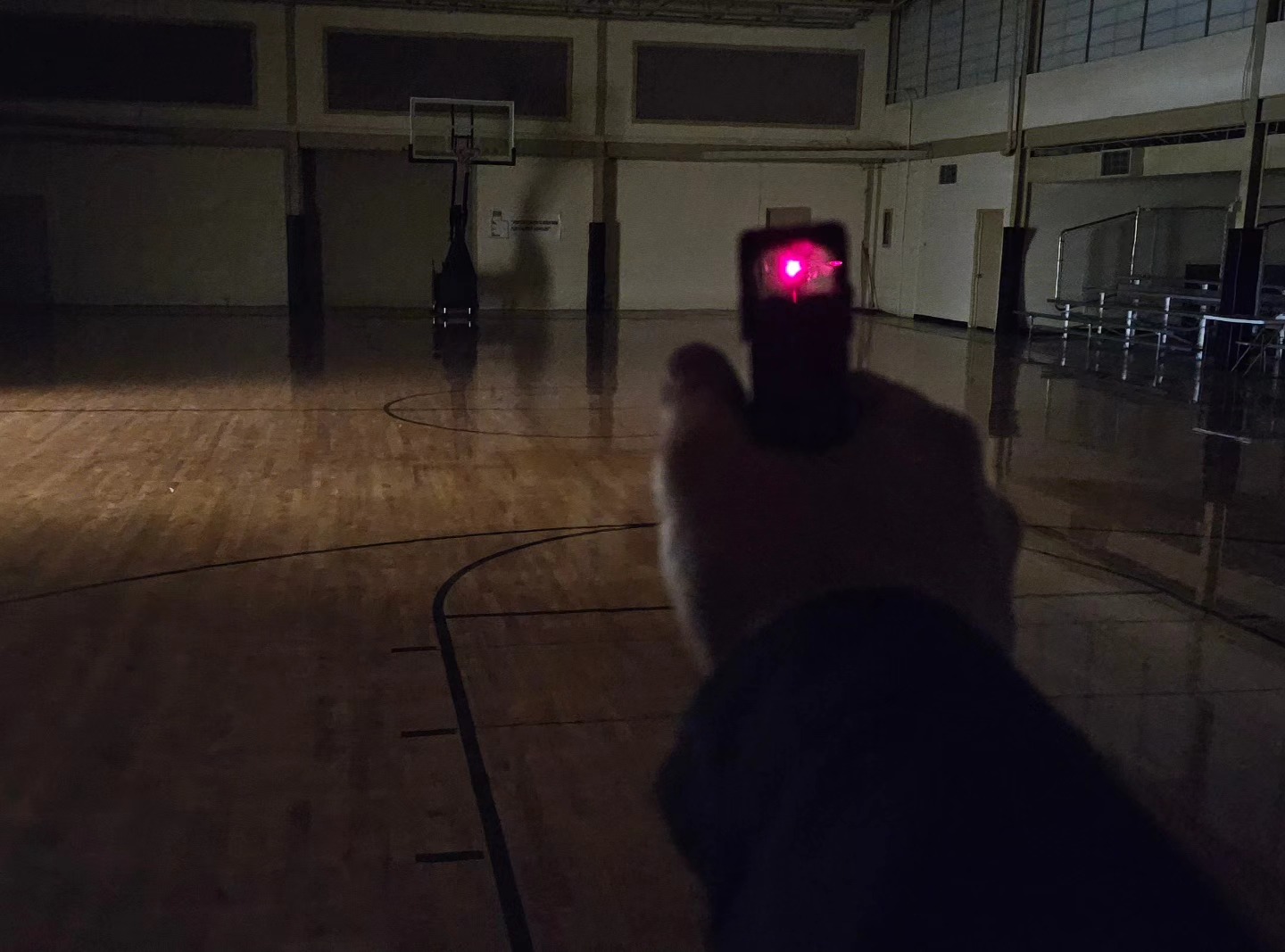
Even with the difference in lighting conditions in this gym, the dort is clearly visible. Set it & forget it. (Courtesy: M Landfair)
Bottom line: Set it and forget it. There are only two times I will adjust my dot: as mentioned, when I am zeroing the optic or, rarely, when I am in the desert during summer, and the environmental glare bleaches out the dot. That’s it. Otherwise, just set it and forget it.
Note: While an officer-involved shooting drove this article, I am not complaining about the officers’ actions or decisions, especially not about their use of deadly force.


 (-1 rating, 1 votes)
(-1 rating, 1 votes)